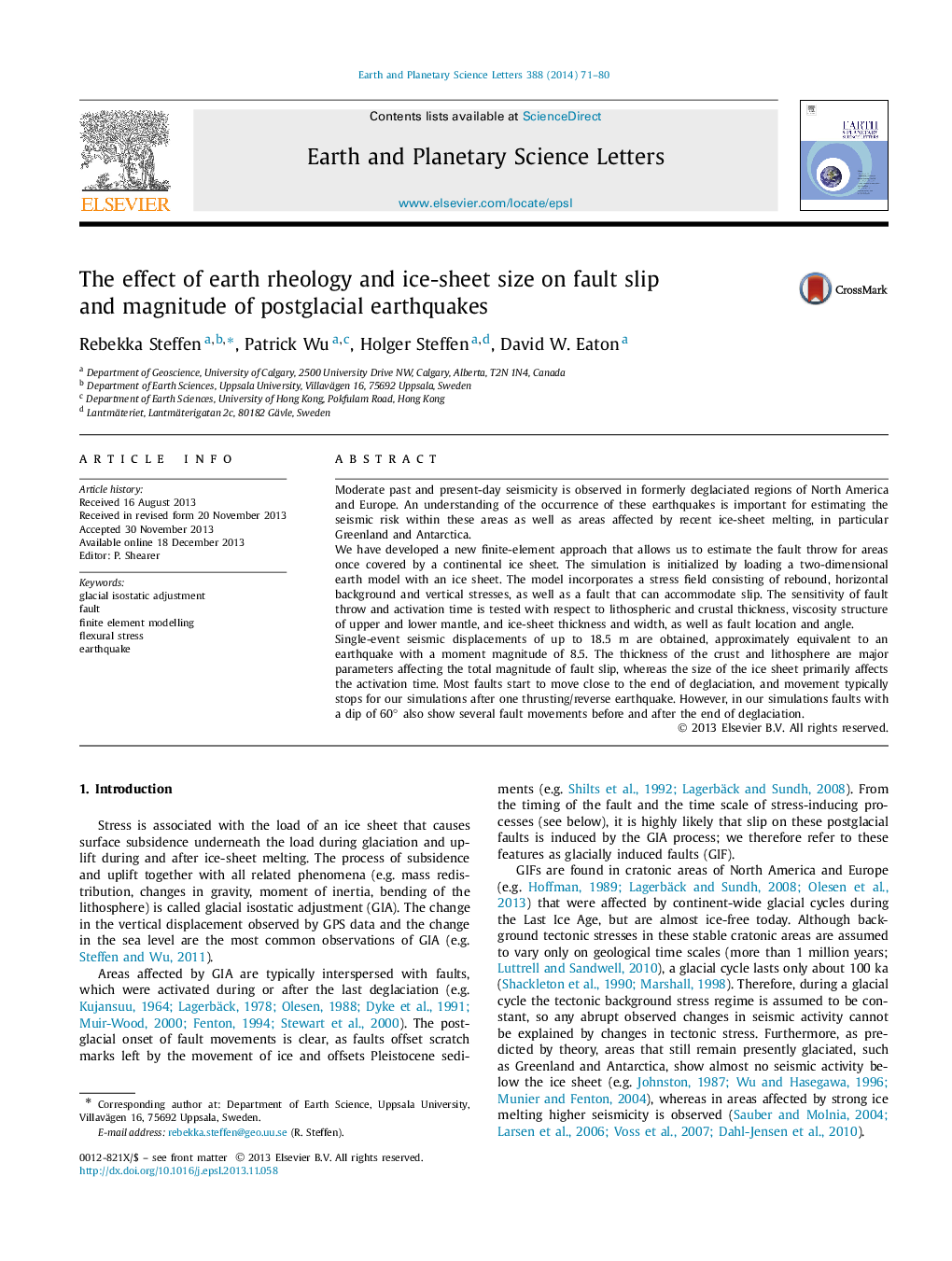| کد مقاله | کد نشریه | سال انتشار | مقاله انگلیسی | نسخه تمام متن |
|---|---|---|---|---|
| 6429753 | 1634768 | 2014 | 10 صفحه PDF | دانلود رایگان |
- Crustal and lithospheric thickness affect the magnitude of fault slip.
- Observed fault slips cannot be used as indicator for ice thickness.
- Glacial cycle changes stable zone into tectonically active area.
Moderate past and present-day seismicity is observed in formerly deglaciated regions of North America and Europe. An understanding of the occurrence of these earthquakes is important for estimating the seismic risk within these areas as well as areas affected by recent ice-sheet melting, in particular Greenland and Antarctica.We have developed a new finite-element approach that allows us to estimate the fault throw for areas once covered by a continental ice sheet. The simulation is initialized by loading a two-dimensional earth model with an ice sheet. The model incorporates a stress field consisting of rebound, horizontal background and vertical stresses, as well as a fault that can accommodate slip. The sensitivity of fault throw and activation time is tested with respect to lithospheric and crustal thickness, viscosity structure of upper and lower mantle, and ice-sheet thickness and width, as well as fault location and angle.Single-event seismic displacements of up to 18.5 m are obtained, approximately equivalent to an earthquake with a moment magnitude of 8.5. The thickness of the crust and lithosphere are major parameters affecting the total magnitude of fault slip, whereas the size of the ice sheet primarily affects the activation time. Most faults start to move close to the end of deglaciation, and movement typically stops for our simulations after one thrusting/reverse earthquake. However, in our simulations faults with a dip of 60° also show several fault movements before and after the end of deglaciation.
Journal: Earth and Planetary Science Letters - Volume 388, 15 February 2014, Pages 71-80
